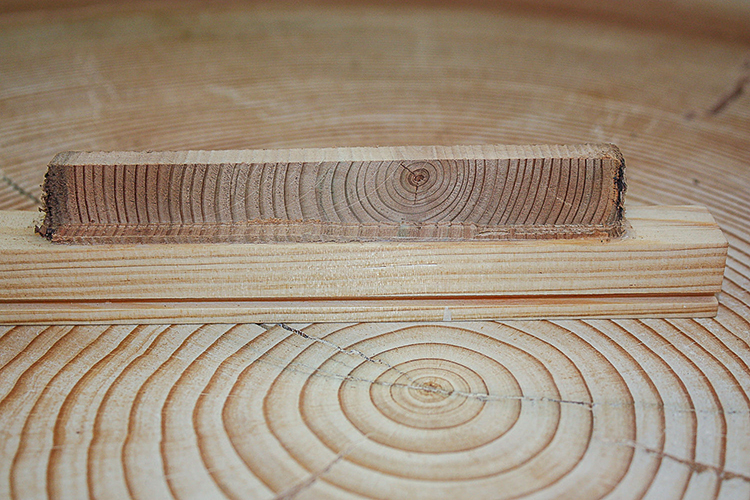Data gained from archaeological wood finds is to be collected, structured and evaluated in a climate and vegetation archive up until the end of 2022. The data will help to adapt today’s forests to climate change. The project ‘ArchaeoForest – Medieval Forest Composition as a Foundation for Forestry Adaptations to Climate Change’ is being realised by Prof. Martin Wilmking’s research group and Dr. Tobias Scharnweber from the University of Greifswald’s Institute of Botany and Landscape Ecology together with the State Office of Archaeology Sachsen and the public enterprise Sachsenforst.
The ArchaeoForest project will also initiate the Archaeological Dendro-Archive for Central Germany at the State Office of Archaeology Sachsen. This archive is based on more than 4,000 archaeological wood finds from medieval mines and charcoal kilns from Sachsen’s Ore Mountains. The annual growth rings of these pieces of wood have maintained a unique archive of climate and forest history.
Timbers used in medieval mines will also be retrieved during the project. Furthermore, samples from forests of today will be taken and evaluated to help calibrate the planned reconstructions.
Scientific methods such as growth-ring dating (dendrochronology), densitometry (measurement of density), charcoal analysis (anthracology) or pollen analysis (palynology) can deliver specific information about the composition and resilience of the primeval forest in the medieval warm period (11th to 13th centuries). At that time, the mountain forests of the region had been hardly touched by humankind. Deforestation of the Saxon primeval forest, known as ‘Miriquidi’ and located in the Ore Mountains in the region that borders today’s Czech Republic, started around this time.
Previous studies have shown that it is possible to use the wood not only to create annual growth-ring chronologies, but also chronologies of other growth characteristics. Experts expect to be able to use these results to make more precise statements about temperatures at that time. The maximum latewood density of softwood is a good indicator for summer temperatures. The results can make it possible to compare and consolidate current strategies and measures for adapting the forests in Sachsen, providing them with various possibilities for adapting to non-foreseeable environmental conditions.
The project is being financed by funds provided by the Federal Ministry of Food and Agriculture (BMEL) and Federal Ministry for the Environment, Conservation and Nuclear Safety’s (BMU) Forest Climate Fund. Total funds of 1.3 million euros are available.
Further Information
Medieval Mining in Sachsen and Böhmen [de]
Media Photo [de]
Contact at the University of Greifswald
Dr. Tobias Scharnweber
DendroGreif
Institute of Botany and Landscape Ecology
Soldmannstraße 15, 17489 Greifswald
Tel.: +49 3834 420 4188
tobias.scharnweberuni-greifswaldde
www.uni-greifswald.de/en/current-news

